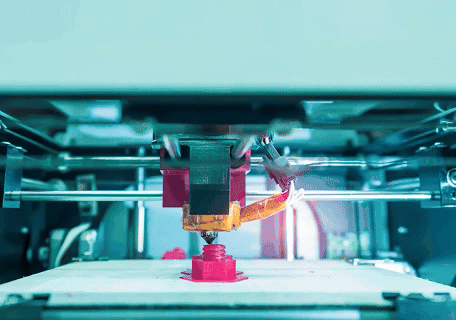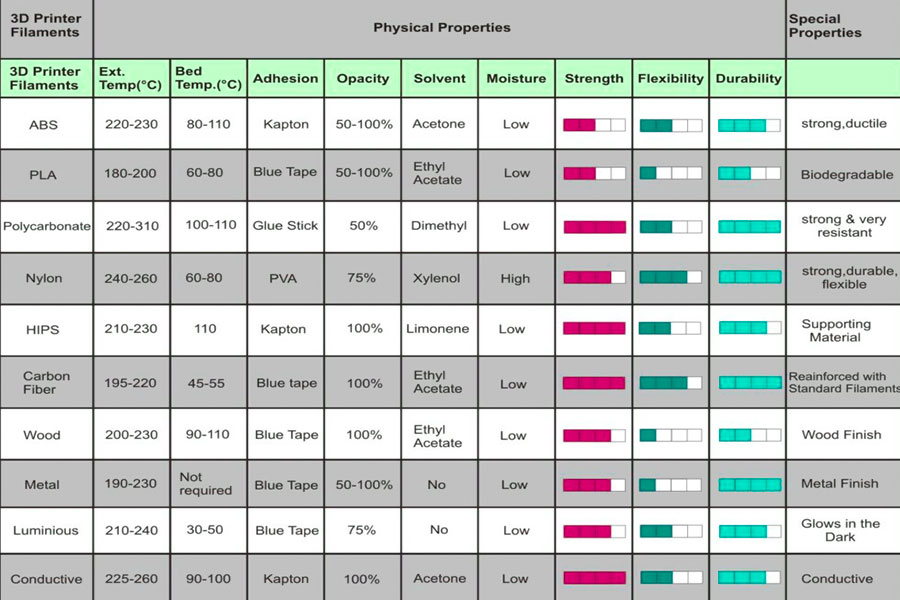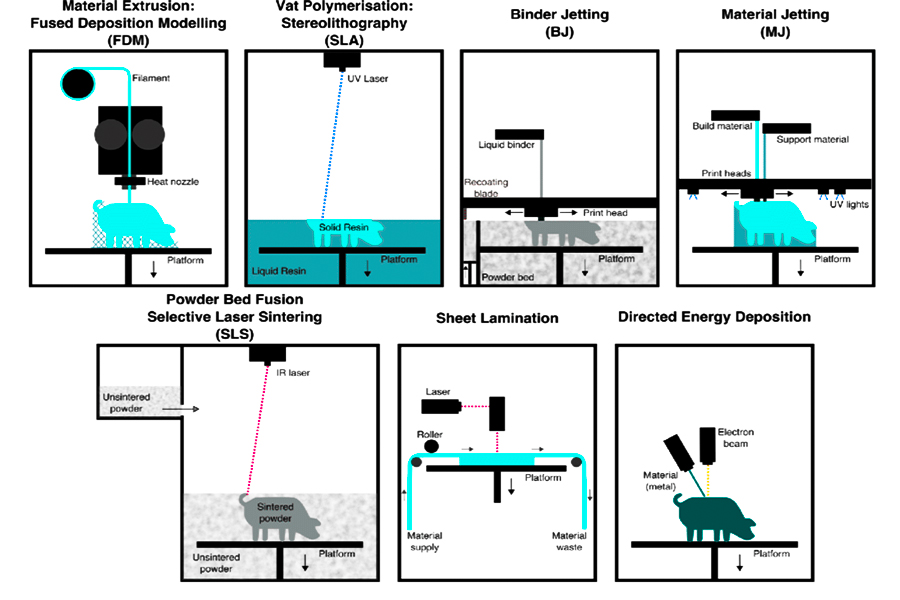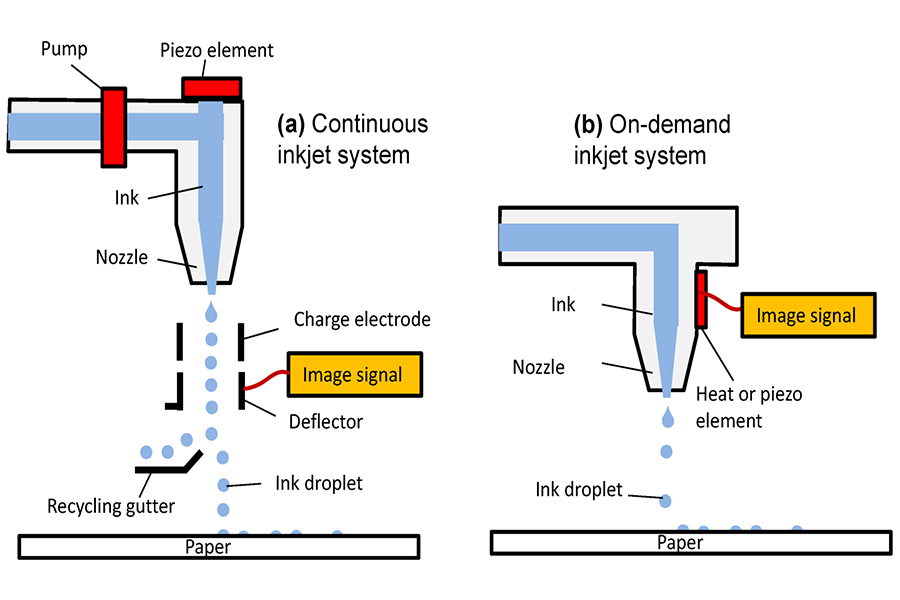La impresión 3D es una técnica de fabricación avanzada que convierte modelos digitales en objetos sólidos al colocarlos en la parte superior, también conocida como la fabricación aditiva. 3 d Impresión Genera entidades 3D directamente a partir de modelos de diseño CAD o diseños de computadora, como los datos de escaneo 3D, reduciendo en gran medida los ciclos de producción de producción y reduce la investigación y los costos de desarrollo. Sus tecnologías centrales incluyen fotopolimerización (SLA), modelado de deposición fundida (FDM) y sinterización láser selectiva (SLS). Flexible para plásticos, metales, cerámica e incluso biomateriales, se usa ampliamente en prototipos industriales, modelos médicos, componentes aeroespaciales y bienes de consumo personalizados.
JS Company ha estado profundamente involucrada en los servicios de impresión 3D durante muchos años, proporcionando soluciones únicas para los clientes. Ya sea la demanda de Impresión del modelo 3D de precisión o la fabricación de componentes funcionales estructurales complejos, JS Company puede lograr una personalización eficiente de alta calidad y eficiente.
< Crea modelos 3D por diseño CAD o escaneo 3D, y luego utiliza equipos para moldear plásticos, metales y otros materiales capa por capa en objetos sólidos. Fabricación rápidamente de estructuras geométricas complejas como cuadrículas huecas y superficies irregulares. Los modelos con impresión 3D se utilizan para imprimir huesos de los pacientes o articulaciones de aleación de titanio para una adaptación precisa. pequeños lotes de componentes , como Aerospace Light andlaza o el consumidor personalizado carcasas. 
¿Qué es la impresión 3D?
¿Cómo elegir materiales de impresión 3D?
Combinando escenarios comunes de aplicaciones industriales y características técnicas, se hacen las siguientes recomendaciones para la selección de materiales de impresión 3D:
1. Selección materna por tipo de tecnología
| Tipo técnico | comúnmente usado | características | escenarios de aplicación típicos | fdm | PLA, ABS, PETG, Nylon | bajo costo, operación conveniente y precisión moderada. | prototipos rápidos , componentes básicos de características. | sla | resina fotosensible (dura/flexible) | La superficie era suave y matizada. | piezas de precisión, modelos médicos . | sls | nylon (pa12/pa6), tpu | resistencia de alta temperatura, alta resistencia, sin soporte. | Componentes funcionales, construcción ligera. | impresión de metal | acero inoxidable, aleación de titanio, aleación de aluminio | alta fuerza, resistente a la corrosión, conductiva y conduzca calor. | aeroespace y moldes automotrices . |
2.Cose según las características del material
| Tipo de material | fortalezas de núcleo | medidas preventivas | pla | Protección ambiental, no tóxica, rentable. | pobre resistencia a la temperatura (<60 ° C). | abs | resistente a los amortiguadores, enchapado. | Durante el proceso de impresión, hay un olor y la plataforma debe calentarse. | nylon (pa) | auto-lubricación resistente al desgaste. | Absorción de humedad, se requiere almacenamiento a prueba de humedad. | tpu | Buena flexibilidad, no es fácil de rasgar. | Imprimir debe disminuir la velocidad. | resina fotosensible | Disponible en opciones de alta resolución, transparente/semi-transparente. | a prueba de UV cuando se almacena. | metal en polvo | Se puede fabricar con alta resistencia y estructura compleja. | El postratamiento es complejo (defat, sinterización). |
3. Determinantes de selección de Key
propiedades mecánicas
- requisitos de resistencia: nylon y metal preferidos.
- Resistencia a la temperatura: ABS (80-100 ° C) vs PA (120 ° C+).
Control de costos
- Verificación rápida: PLA/FDM recomendado.
- Producción de precisión: resina fotosensible opcional o SLS Nylon .
Post Requisitos procesados
- sin pintura: metal/cerámica.
- Color Personalización: filamento multicolor de ABS/PLA.
Aquí hay una comparación de las diferencias centrales entre las tres principales tecnologías de impresión 3D Technologies : 1. Comparación de los procedimientos centrales 2. Comparación de ventajas técnicas y desventajas 
¿Cuáles son las diferencias entre los diferentes tipos de tecnologías de impresión 3D?
Tipo técnico
Principio de formación
tipo de material
Control de precisión
Surface Quality
fdm
se extruye el material de seda fundida en caliente.
Thermoplastics (PLA/ABS).
depende de la precisión de la boquilla (± 0.1-0.5 mm).
grueso (requiere pulido).
sla
UV láser curado de resina fotosensible líquida.
resina fotosensible.
alta precisión (± 0.05 mm).
suave ( Cerca de la moldura de inyecciones ).
sls
sinterización láser de nylon/metal en polvo.
Ingeniería de plásticos/metales.
precisión moderada (± 0.1-0.3 mm).
estructura porosa ( requerido el recubrimiento ).
dimension
fdm
sla
sls
ventaja
bajo costo, amplia gama de materiales, tamaño de impresión grande .
Alta resolución, alto rendimiento de detalles.
alta fuerza, no se requiere estructura de soporte.
desventaja
Rugosidad de la superficie y precisión limitada.
Las resinas son frágiles y complejas de manejar.
Equipo costoso y procesamiento problemático de polvo.
 ¿Cuáles son los principios de diseño básicos que el modelo de impresión 3D debe seguir?
¿Cuáles son los principios de diseño básicos que el modelo de impresión 3D debe seguir?
- homogeneización y minimización: el grosor de la pared de los modelos de impresión 3D debe establecerse en un mínimo de acuerdo con las propiedades del material (> 1 mm según lo recomendado por ABS) para evitar la deformación o la fractura debido a la disminución. JS Company admite paredes delgadas de hasta 0.3 mm de espesor, fuerza equilibrada y liviana.
- Transición de gradiente: los cambios repentinos en el grosor de la pared pueden conducir fácilmente a la concentración de tensión, por lo que las estructuras de gradiente deben usarse en el diseño. El equipo SLA de JS puede manejar estos detalles con precisión.
- Límite de ángulo de suspensión: se requiere soporte adicional cuando los ángulos de suspensión exceden los 45 grados.
- Estructuras internas complejas Puede reducir el consumo de material a través del soporte de panal, y los algoritmos JS pueden generar automáticamente soluciones de soporte eficientes.
<> Span Class = " Data-TransLateId = "6F0FD44AE5F220E96DE8CC873737455A" data-pos = "0" data-Len = "3" data-v-7b79c893 = ""> La reserva de tolerancia: la tolerancia predeterminada es ± 0.1 mm y precisión de precisión de la precisión. El equipo FDM de grado industrial de JS puede lograr una alta precisión de ± 0.05 mm.
- La plataforma de impresión de JS coloca automáticamente y procesa rutas complejas Para evitar que las cavidades complejas obstruyan el flujo de consumibles.
3.Post processing efficiency improvement plan As an important branch of 3D printing, Ink jet printing has become a key technology in complex structure manufacturing, personalized customization and high performance parts production through precise control of micro-nozzles and multi-material compatibility. Its importance is reflected in the following: 1.High precision and meticulous performance 2.Integration of multiple materials and colors 3.Efficient production and rapid iteration 4.Physical diversity and innovation 5.Technical constraints and improvement directions Technology Strength Assessment 1.Advanced equipment 2.Material adaptability Service Capability Verification 1.Design support 3.Post processing support Quality control system 1.Accuracy verification 2.Reliability testing Cost transparency 1.Quotation details 2.economies of scale Priority should be given to service providers with more than 100,000 hours of printing per year (JS has a large-scale production line that reduces marginal costs). Cases and reputations 1.Industry case studies 2.Client reviews Viewing user feedback through industry forums or third-party platforms such as G2 focuses on on-time product delivery and aftermarket response (JS official website shows 98%% customer satisfaction). 1.Industrial-grade precision manufacturing: Equipped with SLA light curing equipment (±0.02mm accuracy), industrial FDM (±0.05mm), SLS nylon printing supports 100% density to 20% crystal lattice free adjustment with 40% weight loss and constant strength. 2.Comprehensive material compatibility: Includes engineering plastics (ABS/PLA), metals (titanium alloys), ceramics, biodegradable materials and conductive silver ink, supporting parameterized material selection (e.g. PEEK resistance to temperatures below 300°C). 3.Cost optimization and small batch customization: By combining 3D printing and injection molding processes, large-scale production costs can be reduced to 60% of traditional methods, especially for small orders of 100-1000 pieces. Water-soluble auxiliary materials can reduce reprocessing costs by 70% and delivery cycles by 30%. 4.Full Chain Digital Services: From CAD modeling to finished product inspection, 18 node data loops ensure 100% restoration of design intent. 5.Global Service Network: We provide 3D printing services to a number of countries worldwide. For small orders (≤100 pieces), delivery can be made as soon as 48 hours. For medical emergencies, we promise 24-hour fast delivery. The bilingual engineering team provides remote assistance such as model restoration and parameter optimization. 3D printing, at the heart of additive manufacturing, is reshaping global manufacturing landscape. It overcomes the limitation of traditional subtractive manufacturing processes, and enables numerous fields with its advantages of high precision, flexibility and low cost. From biocompatible implants to lightweight aerospace components, from personalized consumer electronics to complex industrial prototypes, 3D printing not only accelerates product iteration, but also facilitates frontier expansion in innovative design and functionality. In the future, 3D printing will continue to drive industrial upgrading as smart manufacturing and green manufacturing are deeply integrated. JS helps enterprises achieve personalized, efficient, low-carbon manufacturing and redefine global industry chain values through multi-material collaborative printing and hybrid manufacturing. The content of this page is for informational purposes only.JS SeriesNo representations or warranties of any kind, express or implied, are made as to the accuracy, completeness or validity of the information. It should not be inferred that the performance parameters, geometric tolerances, specific design features,material quality and type or workmanship that the third-party supplier or manufacturer will provide through the jusheng network. This is the responsibility of the buyerAsk for a quote for partsto determine the specific requirements for these parts.please Contact us Learn more information. JS is an industry-leading companyFocus on custom manufacturing solutions. With over 20 years of experience serving more than 5,000 customers,we focus on high precisionCNC machining,Sheet metal fabrication,3D printing,Injection molding,metal stamping,and other one-stop manufacturing services. 1.How can 3D printing reduce material waste? Traditional manufacturing often requires cutting and engraving, with a waste rate of 30% -50%. 3D printing is additive manufacturing, which involves printing only the parts needed, with a material utilization rate of over 90%. It is particularly suitable for small or complex production. 2.What is the best FDM printing layer thickness setting? The prototype is rough, with layers of 200-300 microns (0.2-0.3 mm) thick, fast but rough on the surface. The model is excellent, with layers 50-100 microns (0.05-0.1 mm) thick, better detail and longer processing time. 3.Are SLS-printed powder materials reusable? SLS-printed powder material can be reused, but after repeated use, its flowability decreases and their strength decreases slightly. The recovery rate of metal powder can be over 90%, and the number of uses needs to be controlled according to the material type to ensure performance. 4.Is 3D printing expensive? Small plastic printers for home use range from $280 to $1,400, and are suitable for DIY and small batch production. Mass production relies on industrial-grade metal/high-performance printers, requiring tens of thousands to millions. ¿Cómo equilibrar la eficiencia y la precisión entre el grosor de la capa y la velocidad de impresión?
What is the importance of ink jet printing in 3D printing?

How to evaluate the professionalism of a 3D printing shop?
Five reasons to choose JS company's 3D printing services
Summary
Disclaimer
JS Team
Our factory is equipped with more than 100 state-of-the-art 5-axis machining centers and is ISO 9001:2015 certified. We provide fast, efficient and high-quality manufacturing solutions to customers in more than 150 countries around the world. Whether it's low-volume production or mass customization, we can meet your needs with the fastest delivery within 24 hours. chooseJS TechnologyIt means choosing efficiency, quality and professionalism.
To learn more, please visit our website:jsrpm.comFAQs
Resources






